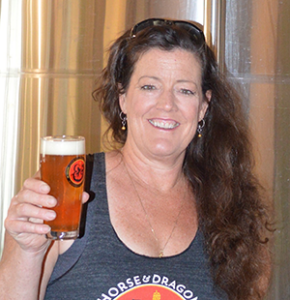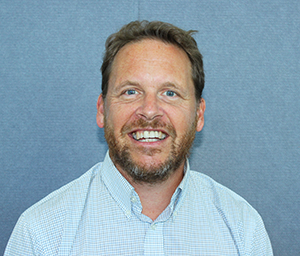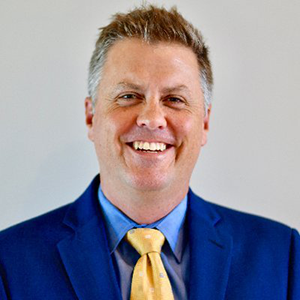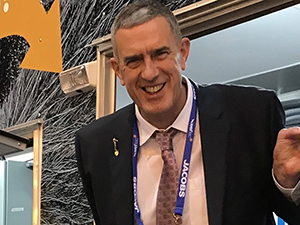In this episode of Engineering Legends, we hear from members of the Pure Water Brewing Alliance about the sustainable practice of brewing beer with recycled water. We also discuss how high purity water is providing a blank canvas for brewers to showcase their brewing skills and creativity.
Don’t miss our podcast guests and sampling recycled water brews at this year’s Craft Brewers Conference & BrewExpo America in Denver, Colorado, September 9-12th. Learn more and register here.
Transcript
Tiffany Long: Welcome. I’m Tiffany Long.
Kelly Rogers: And I’m Kelly Rogers.
Tiffany Long: And we’re here today with a very exciting topic for you – BEER!
Mark Poling: This stuff used just to be sewage. How do we evaluate? He goes, “Just look at the data.”
Tiffany Long: You’re listening to the Engineering Legends Podcast brought to you by Brown and Caldwell. Our mission is to bring you the stories behind the engineering. So why are we talking about beer? Let’s get into it.
Kelly Rogers: Here with us today, we’ve got several members of the Pure Water Brewing Alliance. They’re a group of utilities, brewers, engineering firms, and technology companies that are pioneers in the concept of brewing beer with recycled water. We also have Carol Cochran from the Horse & Dragon Brewing Company in Fort Collins, Colorado. And BC’s own Sean O’Connell, who’s a beer brewing hobbyist. We’re excited to have them all with us today and to have an opportunity to raise awareness of water reuse, in this case for the purposes of brewing beer.
Tiffany Long: This is so exciting. We have a ton to talk about and a great group with us today. So let’s get right to the discussion. Everyone grab your favorite Pilsner, IPA, or pale ale as we talk about America’s favorite beverage. Let’s start with some introductions.
Sean O’Connell: I’m Sean O’Connell, I’m actually an engineer here in Brown and Caldwell’s, Denver office. I’m the Rocky mountain regional wastewater practice leader. And actually I’m participating in the state here, in fact, I just got off a call for the regulation making process for direct potable reuse. So I think it fits really nicely in with the topic about using wastewater effluent, essentially for a source for beer and drinking water.
Kelly Rogers: Great. Mark Poling.
Mark Poling: Mark Polling. Most recently, with Clean Water Services for about 25 years. Recently retired, but I’m still very active working professional associations and work. And I hope to stay – absolutely stay – involved with Pure Water Brewing Alliance. Because it’s been one of the more fun projects. Actually the most fun project in my career.
Kelly Rogers: Great. Travis Loop.
Travis Loop: Hi, I’m Travis Loop. I’m the Communications Director for the Water Environment Federation and just glad to be along for the ride on this pure water brew journey. And one of the members of our informal board of directors of the Pure Water Brewing Alliance.
Kelly Rogers: Great. Mark Jockers.
Mark Jockers: Hi there. Thanks so much. My name is Mark Jockers. I’m at Clean Water Services. And Mark Poling and I we’re the folks that really made this happen, in terms of starting this of crazy idea of taking clean wastewater and turning it into beer, about 2015. I agree with Mark. It’s probably the most fun thing I’ve done in my career. It’s more fun than doing capital planning or budgeting for instance. And I’m one of the founders of the charter members that Pure Water Brewing Alliance. And this project has taken me around the country and is taking this program, frankly, around the world.
Kelly Rogers: Great. And Carol Cochran.
Carol Cochran: Yeah, I’m Carol Cochran with Horse & Dragon Brewing Company, which is a small craft brewery in Fort Collins, Colorado. And I guess I’m here for some education today. And really eager to learn more about what you all are doing.
Kelly Rogers: Well, let’s jump in. So the first question I have is why use recycled water for beer? I mean, why would you want to do that?
Mark Jockers: So why would you? This is Mark Jockers with Clean Water Services. I think we looked at using recycled water for beer, because it was a way to really demonstrate the quality of water. Talking to our brewers, our brewers always said, “Well, all water aspires to be beer.” And if any water aspires it to be beer, it should be this water. Because this water that we were producing as part of this pilot project, which is this high purity water, it really deserved to be there. And if there was a way that we could tell a story about reuse in a way that hadn’t been told before.
Previously talking about particularly, potable reuse, you get in a conversation with someone about what’s in that water and how was it treated? And all those things are important. But when you have a beer and you talk about reuse, the questions typically are, do you have a light beer or do you use dark beer? Or oh, is that a Pilsner or is that… So it’s a really, it’s a different conversation. It’s also an engagement with somebody other than a utility engineer, right? It’s an engagement with these water quality – just pros – that are brewers.
Kelly Rogers: So who came up with the idea? Who said, “Let’s make beer out of water.” How’d that happen?
Mark Jockers: Mark, you want to?
Mark Poling: Well, Mark, as I recall it was Art Lawrance from our citizens advisory committee. That correct Mark?
Mark Jockers: Yes.
Mark Poling: Yeah. I thought so. So Art, who was on our citizens advisory committee, was there representing businesses in our district. Well, the business he runs is a brewery. He’s a brewer and he runs Cascade Brewing. So he said, if you really want to get people talking about water, you ought to make beer. And he was absolutely right. Mark talked about, people have a different approach. I’ve served pure water brew to hundreds of people. I’ve only had one person who (everyone knows where the water came from), but I only had one person who said, no. And a year later they came back and asked if I had some left.
Kelly Rogers: Oh, wow.
Mark Poling: So, it’s a very different conversation when you turn it into beer. And there’s this tendency, because I guarantee you, I could put a high purity water bottle on one side and a beer on the other, the water was used to make the beer. People very hesitant on the water. Yes, please I’ll have a beer. Thank you.
Mark Jockers: So this is Mark Jockers again, Art Lawrance really was the inspiration for this. And Art Lawrance is, he is the godfather craft brewing here in Oregon. He and a handful of other people, the Widmer brothers, changed the state law in the mid 1980s. To allow the serving of beer at a brewery. So it was really the craft, the idea that you could have a brew pub and later he founded the Oregon Brewers Festival where you can go down to the Waterfront here in Portland and drink beer with 70,000 of your closest friends in the summer. Obviously we’ve not been able to do that the last two years. But Art knew the power of that conversation. And he also used to joke that some of the best ideas have been hatched over a pint of beer.
Tiffany Long: I think that’s great. So, Travis, what are the goals of this alliance? What are you trying to accomplish?
Travis Loop: Well, I think there’s a lot of goals here. But ultimately, as the country faces a lot of water scarcity issues, water supply issues, water pollution issues. I think we in the water sector believe that water reuse, water recycling is just going to be essential to sustainability in the future. So the idea is that through this pure water brew, it introduces the concept of water recycling to people. It makes it more acceptable. It’s a great way to open up that conversation. So I think ultimately it’s about introducing that concept of water recycling. Getting people curious and building acceptance of getting water recycled and put back into the drinking water system. I think that’s really key.
Kelly Rogers: Great.
Travis Loop: I think that also, I’d also add that hopefully by doing these beers, there’s changes in regulations across states. That’s something that has been accomplished in Oregon and some other places, Arizona and California. Whether it’s special permits to do one-off brews or long term changes and what the regulations are. I believe in Arizona now they have two spots, where this water is offered for brewers to go pick it up on a continuous basis. So seeing that actual, tangible change like that is awesome.
Kelly Rogers: So I know there are brewers in California, I think you said Arizona, Oregon. For states that haven’t done this yet, what are those regulatory challenges that, I mean, how do you say, how do you turn it into beer? I mean, do they have to do a special permit? What’s the process?
Travis Loop: I’ll let Mark or Mark chime in on that a little further. But I’d say one of the challenges is the patchwork of regulations across the country. From state to state. How it varies. How water can be reused. And so that’s probably the biggest hurdle to getting pure water brew out there, is taking a look at what those state rules are and finding out what’s possible. And educating regulators on what’s been done in other states as a way of making that happen. Mark and Mark I’m sure have some thoughts to add to that.
Mark Jockers: So this is Mark Jockers. That’s exactly right Travis. Reuse regulations are really a patchwork. And as we’ve talked to people that want to do this around the country. I know those of us on the call here, we’ve worked with people in Florida, and Arizona, and Kentucky, and Colorado, and Idaho, and California and Oregon, all over the place. And each place is a little bit different. There are some places that have much more robust and sophisticated reuse rules. Because reuse is, potable reuse has been a real thing.
When we started this project in Oregon, our reuse rules did not even contemplate potable reuse. In fact, when they were written in the ’90s people said, “Well, we didn’t need do that. We’d never do that here in Oregon.” Because it just, there wasn’t any need to think about it, where I think this prompted that conversation. But it’s the biggest question we get is, what is the regulatory piece? And in some places, for instance, with Idaho, the regulator in Idaho, who’s brilliant and smart, just borrow the permit that was written in Oregon. Right? I think it took us, Mark Poling, I think it took us a year to get our permit?
Mark Poling: Oh, yeah. Oh, yes.
Mark Jockers: And Idaho got theirs done in seven weeks and part of it’s because they just copied someone else’s homework. Right?
Kelly Rogers: Oh, perfect.
Mark Jockers: So it’s a little bit of, it doesn’t always pay to be on the bleeding edge. It’s sometimes it’s great to be second or third.
Kelly Rogers: Right. So can a brewer come to you guys to get advice on how to get through those regulatory hurdles? Is that part of your goal?
Travis Loop: Hey, this is Travis. I would say that is one of the goals of the Pure Water Brewing Alliance. That’s maybe how we’ve been most useful. When often there is a utility or a state’s water association that’s interested in doing a pure water brew. And somehow they’ll connect with one of us. And generally we’re able to talk to them and say, hey, here’s how, here’s the technical issues with the water. There’s the regulatory stuff you have to deal with. Here’s how we’ve communicated. Share those case studies to help them work through those different aspects of doing a pure water brew. And so that’s one of the reasons we formed that Pure Water Brewing Alliance is just to be a knowledge sharing group, in addition to getting to talk about beer together.
Kelly Rogers: Great.
Tiffany Long: And so then do you do outreach and actually go out to find brewers? How do you get them involved?
Mark Jockers: Poling you want to talk about that one?
Mark Poling: Well, absolutely. We’ve been to, Mark, I know Mark and Travis have both been to the National Craft Brewers Association Conferences. Did I get the title right? We have had booth, at that conference two years or three years? At least two.
Travis Loop: So it’s tough to tell time anymore after the past year and a half.
Mark Poling: Yes.
Travis Loop: I know that it’s been at least two years and then we, I attended for a couple of years before we started having a booth. So I think I have five of them under my belt now.
Tiffany Long: So that’s a rough job for you.
Kelly Rogers: And don’t you at WEFTEC have a big event called the Sustainable Beer Smackdown, I think?
Travis Loop: We’ve had a couple of different beer events at WEFTEC and I think it was kicked off by my Oregon friends here and the Sustainable Beer Smackdown, right? Where you guys had a little bit of some smack talking with Milwaukee.
Mark Poling: Milwaukee. Yeah.
Travis Loop: And their activated sludge brew that they had. But we also have had a beer garden on the WEFTEC show floor that featured pure water brew. And people were visiting and lining up to try to get beer before it even opened at noon every day. So it was a real hot spot for trying beer and then networking also.
Mark Jockers: So this is Mark Poling. I mean this is Mark Jockers, that’s Mark Poling. One of the things that I think is interesting about this project and particularly when we started. I think the first time we went to WEFTEC with the beer was 2015. Is our audience for this? Because this is about a mindset change and it’s cool and it’s fun. And it’s super. It’s best part of my job. Our audience in a lot of ways was our own industry because we have an industry that has balkanized water into so many different things. And I think what we’re saying is, water is water. And I think one of the biggest things, I’m a communication person.
Mark Jockers: The thing that drives me most crazy about reuse, so recycled water, is this description of the water based on what it used to be, as opposed to what it’s being used for. Right? This is why the water that we have used to brew beer is not recycled water, it’s high purity water. Okay? We are producing high purity water. Not recycled sewage or anything like that. So as a result, from a regulatory standpoint, we tried to get the regulators and they’ll agree to this, that we should be judging the water based on its quality, right? Is it drinking water quality or in fact, in this case, is it better than drinking water quality? Is it cleaner than that? Or it’s not former sewage. Because by that measure, every single thing we drink is former sewage right? We’re in a closed system, right?
Carol Cochran: I was just going to say this, actually, I was going to butt in. This is Carol. One of the things we love about Fort Collins is that we’re in a pretty small watershed and we’re right at the head of it. So there’s no treatment above us. But there certainly is tons of activity by human and other animal life upstream of us. So of course, everything that we’re drinking and using in our households is to some degree, former sewage and not some form of a perfectly pure raindrop before it ever passes through the atmosphere or whatever. So interesting hurdle that people do have this hurdle to get over, about the idea of reusing water, when really we have always been really reusing it.
Mark Poling: Yeah, absolutely. I like to draw a picture for people and I draw a river. Here’s upstream, here’s downstream. I put two towns on it. And then the water plant, the drinking water plant intake is upstream of course, for the up river city. And then the wastewater treatment discharge is down river because we can’t have that. And then the next city, their drinking water intake. Oh, well we got to have it above our treatment plant. Well, but there’s treatment plants above, right? There’s wastewater, that’s cleaned wastewater, that’s discharged in almost every river, major river around the country. And in Mississippi, I forget what the calculated, by the time it gets to New Orleans has been used seven times, I think. And it’s about water is water and we have technology to make it better. And one of the things that we did in this project, which was frankly, one of the easier parts, was the technology that we use to make the pure water.
So we threw everything, but the kitchen sink at it because we didn’t want people to find reasons not to give us the regulatory permission. So we use ultrafiltration on our cleaned wastewater, and then we ran it through a reverse osmosis. And then we went through RO. And then we used a high rate oxidation with UV system and a little bit of hydrogen peroxide. So when we did all these tests, this pages of tests, right? Again, this regulatory permission took us a year to get this. And so we had to show them it was just water. And our home brewers who made the first pure water brew from the Oregon Brew Crew. They called it the Chart of Zeros because it’s non-detect, zero, non-detect. So we just really had to do that in order to get that permission that we needed.
And frankly, we’re not saying that all of that technology is necessarily needed, but we wanted to make sure there was nothing that can be put in a way from a regulatory standpoint. And another thing that we got really lucky, because not only did we have to get the permission of our environmental regulators, so our DEQ. We had to get the folks from the health department. The state health department and the drinking water. We were really lucky because we had a gentlemen who, when the people who are going to review it, was in charge of their drinking water. Came to me and said, “Well, this stuff’s used to be sewage. How do we evaluate?” He goes, “Just look at the data. Don’t worry about where it came from. Just look at the data.” And when you look at the data, it’s absolutely. As Mark said, it meets or exceeds drinking water standards in every single facet that we could measure.
Kelly Rogers: Are brewers finding that the recycled water is of a better quality, they’re making better beer because of it?
Travis Loop: While I was going to, your mention of the Chart of Zeros, I was curious what Carol, as a brewer, how she would react to getting water like that, that is such a complete blank slate. What you would think of that?
Carol Cochran: So this is something that brewers often try to achieve with their incoming water. And then treat it with salts or other chemicals to achieve a specific profile that they’d like to build on. We do like to say that there is a quality to our water here, that we appreciate it’s part of the terroir of our beer. But if we were trying to brew a specific beer, or if we had concerns about the quality of it coming in, certainly we would do a lot more treatments and do and try. And we wouldn’t even be able to afford to do the number of treatments that you just mentioned.
But to have that blank slate, and then to be able to paint to on that with the flavors that you’re trying to add in, and imbue is, for a lot of small brewers, is a once in a lifetime opportunity. So I think most of us, I myself, am not a brewer. I have home-brewed once in my life, I just pay the bills at the company. I always say that my husband, the bank and I, own Horse & Dragon Brewing Company. But people much more qualified than we, do our brewing. And they would, I think they’d be thrilled to have the opportunity to have this truly pure water to paint on.
Sean O’Connell: Yeah, and this is Sean and I’ve home brewed for 30 years. And that’s one of the things that I think it would be fascinating to try this just as a home brewer. Because I do the same thing. All the home brew stores, you can buy the different types of salts and things like that as additives. And if you want to produce a Pilsner, you can actually tailor the water. So I think that’d be a lot of fun. And I think a way that brewers could get pretty creative even at a home brewing scale.
Mark Poling: But, and this is Mark Poling. One of the things that we asked our brewers to do was to stick to certain styles because we didn’t want any, we didn’t want stouts. We didn’t want big, heavy beers because we didn’t want anyone to think we were trying to hide the quality of the water. So we got pilsners and lagers and folks made some great beer, some pale ales, and they were delicious. And it was just one of those things where we just said, look, let’s stay away from those beers. People will think we’re trying to hide it. And we want the quality of water to come through. And as you know, like on a Pilsner or really good Pilsner or lager, it’s all about having clean water and having that very clear beer, that wonderful, delicious taste that you get with that, especially on a hot day, right?
Kelly Rogers: Don’t you have a mobile treatment unit as well?
Mark Poling: This is Mark Poling, I was just going to mention that. A part of what we wanted to do was, we were doing this on a pilot scale and we were borrowing equipment from cement, different manufacturers to do this. And we said, look, we got to quit tearing it apart and put it together every year. It was a lot of work, frankly. So we specked out following Arizona’s lead. Actually Arizona was the first one to build a trailer system that contained this pure water technology, and really use it as a centerpiece for talking about it. Here’s how we treat the water. Here’s what happens. And so for us, it’s also, not only is it in a practical sense, it’s a unit that produces the water for the brewers. It’s also for us, as a public information campaign on wheels. And we’ve got, our communications folks, Mark’s group did a wonderful job, wrapping it, putting the informational stuff inside of it. We’ve had it at WEFTEC two times, I think. Mark? Twice. We would’ve had it there more, but we’ve had no in-person stuff lately. But Mark, we’d done itsome public events locally, right?
Mark Jockers: Yeah. So the Pure Water Wagon, as it’s called. From an education standpoint, we think it’s important for people to be able to see and even touch the equipment. To see what it looks like. And then it’s very clearly this does this, this does that. And we’ve had that at the county fair. And we took it to the Northwest Water Reuse Association Conference in Boise, Idaho. So we have it on the road. Ultimately last year in 2020, it was supposed to be in a pavilion at the Oregon Brewers Festival. We designed a pavilion where all the people who came to the festival could come and see it and then partnered—so this was interesting. We decided to offer the water to people that, to the brewers that attended the Oregon brewers festival and they applied to attended. And we thought, boy, we’ve got to make sure we get at least, we can provide water to 15 brewers. We got to have at least 15 respond. So when the brewers festival sent out the invitation, we got, I think, 58 brewers come back and say, we’ll take the water. So we had to triage that a little bit. And then ultimately because of the pandemic, everything got canceled anyway.
Carol Cochran: So where do you actually, when you take that mobile unit out, where is the input water coming from?
Mark Jockers: Well, typically it is a static display. If we’re out like at the fair. Ideally what we could do is we could drive that mobile unit to the Fort Collins water resource recovery facility, and the smart people there could plug their effluent into the back of it and push clean water out of the other side. That’s how we designed that, really more for the Pacific Northwest, but that any Water Resource Recovery facility could use this. Now this is where you get into the problems, right? They’ve got to make sure they have the permit in place for, what does their reuse plan look like? Does their reuse plan allow them to do things like this?
Kelly Rogers: So let’s talk about what’s next. What is the future for pure water brewing?
Travis Loop: Hey, this is Travis. I’d say that coming out of this pandemic, we’re hoping that things get going again. It’s obviously, everything been on pause. And so we haven’t had beers and haven’t had the fun and all that. But I’m happy to report that I know of a few efforts that are underway, that should result in some pure water brews. I believe that there’s some breweries working in the Chattanooga, Tennessee area, through the water environment federations, Kentucky-Tennessee affiliate, where they’re going to produce some beers. The same association did this in Louisville a couple of years ago. And then also the city of Los Angeles, LA Sanitation is going to be working on a brew and that’s going to be a really high profile product right there. I understand from them that even mayor Garcetti is a craft beer fan. And so hopefully we’ll see him raising a glass at some point here. So there’s a couple more beers in the works. Hopefully we can continue showing up at the craft brewers conference and spreading the word about this and just keeping it going.
Tiffany Long: Thanks Travis. And yes, we will definitely be raising a glass to the future of pure water brewing and thanks to all of our guests today, for joining us to discuss the benefits and some of the ins and outs of using recycled water to brew beer. In a year when much of the country and the world are experiencing extreme drought conditions. It’s great that we have this opportunity to discuss the importance of using water sustainably and also to showcase how high purity water is providing brewers a blank canvas, to showcase their brewing creativity. If you are a brewer or utility, that’s interested in exploring this topic further, you can find out more information at purewaterbrew.org.
Kelly Rogers: I bet many of our listeners out there have their own engineering legends. We’d love to hear from you. Please send us your feedback, stories and ideas for future episodes. You can reach out at info@brwncald.com. This podcast was brought to you by Brown and Caldwell. It’s our purpose and our passion to safeguard water, maintain infrastructure and restore habitats to keep our communities thriving. Until next time!






